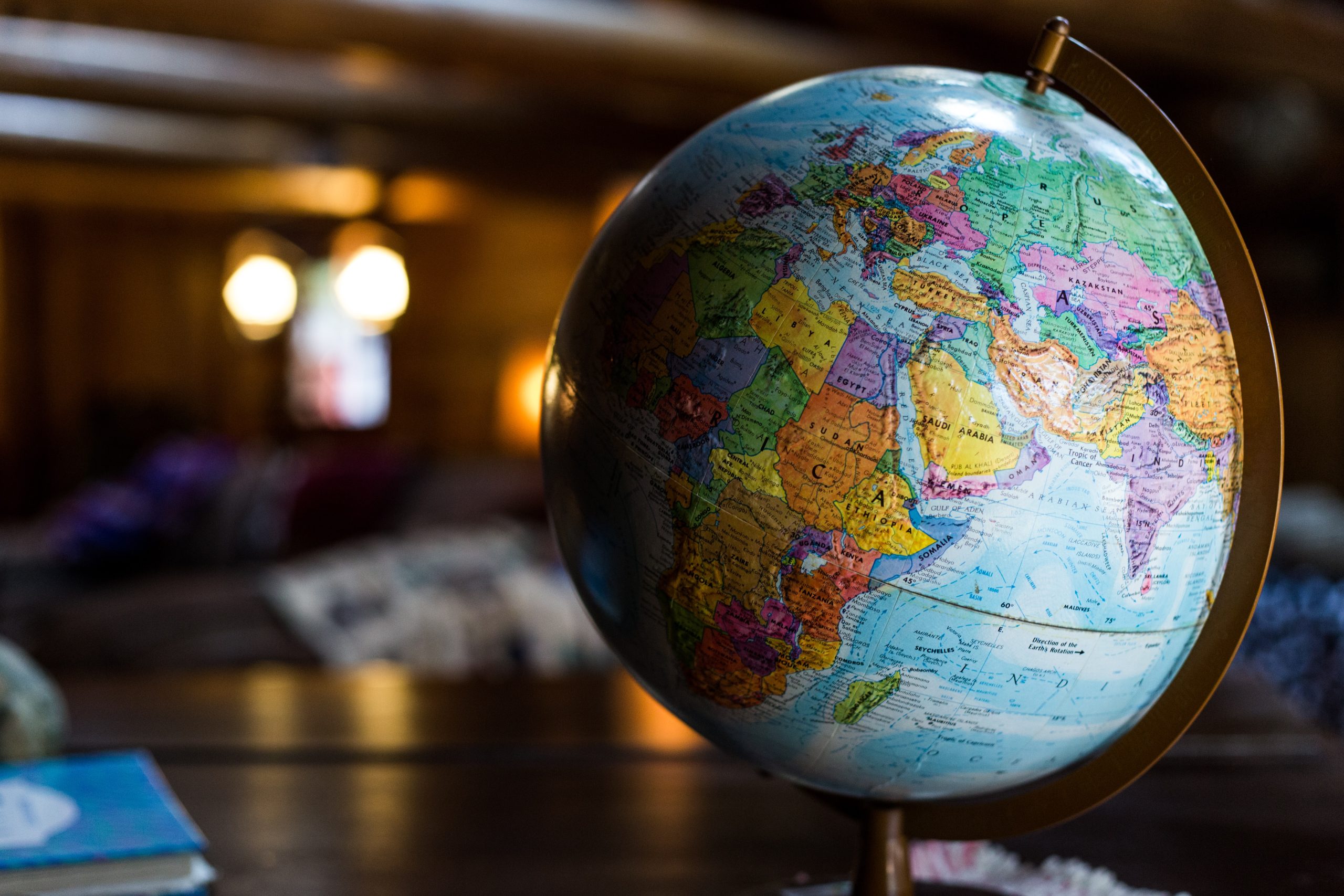It’s necessary for you to understand the dire state of the Baltic Sea, a unique marine ecosystem facing severe threats from pollution and climate change. As a key part of Northern Europe’s environmental heritage, the Baltic Sea is suffering from nutrient runoff, chemical contaminants, and plastic waste, all of which can have devastating effects on marine life and your health. By taking informed action, you can contribute to protecting this vital body of water and ensuring its survival for future generations. It’s time for you to engage in the necessary steps for preservation.
The Current State of the Baltic Sea
While the Baltic Sea is a unique and vital ecosystem, its health is under significant threat from pollution and over-exploitation. This semi-enclosed body of water is one of the most polluted seas in the world, facing challenges from nutrient runoff, toxic substances, and invasive species, all leading to a decline in overall maritime health. You can see the impact in diminishing fish populations, harmful algal blooms, and deteriorating water quality that affect both marine life and coastal communities.
Overview of Pollution Sources
An array of pollution sources contributes to the deteriorating state of the Baltic Sea. These include agricultural runoff containing nitrogen and phosphorus, industrial discharges with heavy metals, and urban wastewaters. Additionally, shipping traffic introduces oil spills and marine litter, while climate change exacerbates these issues by altering salinity and temperature levels.
Impact on Marine Ecosystems
With these multiple sources of pollution, the Baltic Sea’s marine ecosystems are facing severe threats. Land-based runoff fuels harmful algal blooms that deplete oxygen levels in the water, causing fish kills and creating dead zones where aquatic life cannot thrive. Endangered species like the Baltic cod and seals are further stressed by habitat degradation and competition from non-native species, disrupting the entire food web. You should be aware that the future of the Baltic Sea’s biodiversity hinges on immediate and effective mitigation efforts.
To restore and protect the Baltic Sea, urgent action is needed to tackle pollution and enhance conservation efforts. Initiatives like implementing better agricultural practices to reduce nutrient runoff and improving wastewater treatment systems can significantly benefit marine ecosystems. Additionally, safeguarding critical habitats and promoting sustainable fishing practices help maintain biodiversity. You play a key role in advocating for policies that support these changes, as well as participating in local clean-up efforts to reduce pollution. Protecting the health of this precious sea is a shared responsibility that will pay dividends for future generations.
Legislative Framework
The legislative framework surrounding the Baltic Sea aims to address the rising pollution levels through a blend of national and international efforts. Comprehensive laws and guidelines have been established to regulate discharges, protect marine biodiversity, and promote sustainable practices. You will find that both EU directives and regional agreements drive these regulations, emphasizing the need for collaboration across borders to preserve this vital ecosystem.
International Agreements and Cooperation
On the international stage, several agreements focus on Baltic Sea conservation, such as the Helsinki Convention. This treaty fosters cooperation among Baltic nations to reduce nutrient inputs and manage marine resources sustainably. You will see how these collaborative efforts have led to improved water quality and biodiversity protection, showcasing the importance of unity in tackling pollution.
National Policies and Regulations
Around the Baltic Sea, each nation has implemented specific policies and regulations aimed at combating pollution and safeguarding marine life. These measures often align with EU directives but can vary in application and effectiveness.
Indeed, you will notice that the national policies and regulations are pivotal in protecting the Baltic Sea. Countries like Sweden and Finland have enacted stringent environmental laws to control emissions and waste management practices. In contrast, nations with less strict regulations may contribute to ongoing pollution issues. Research funding and local initiatives play an important role in fostering innovation for cleaner technologies and approaches. Notably, public awareness campaigns are increasing your understanding of the importance of individual actions in contributing to the overall health of the Baltic Sea. Together, these national efforts can lead to a healthier marine environment.
Pollution Control Measures
Some pollution control measures are necessary in tackling the environmental issues facing the Baltic Sea. These methods not only aim to reduce the levels of toxic substances but also focus on promoting sustainable practices across industries and communities. You can participate in these efforts by supporting regulations that limit emissions and advocating for cleaner technologies in your area.
Waste Management Strategies
Between effective waste management strategies, you will find practices that can significantly reduce the amount of pollutants entering the Baltic Sea. Implementing recycling programs, encouraging waste separation, and promoting environmentally friendly disposal methods are some actions you can support to help protect this vital ecosystem.
Reducing Nutrient Runoff
About reducing nutrient runoff, it is important to address the excess fertilizers and agricultural chemicals that often wash into waterways. You should advocate for responsible farming techniques and support local policies that prioritize sustainable land use practices, which can lead to healthier water systems.
It is critical to understand that nutrient runoff contributes to eutrophication, which leads to algal blooms that deplete oxygen levels in the water, threatening aquatic life. By promoting buffer zones along waterways and using organic fertilizers, you can help mitigate this issue. Supporting farmers who adopt these methods not only benefits the environment but fosters a healthier ecosystem in the Baltic Sea, ensuring its vitality for future generations.
Restoration Efforts
After decades of environmental neglect, focused restoration efforts are imperative to revive the Baltic Sea’s health. You can actively participate in initiatives aimed at reducing pollution, restoring habitats, and improving water quality. Communities around the coast are joining forces to implement restoration projects that not only enhance the ecosystem but also support local economies, ensuring a sustainable future for this precious marine environment.
Habitat Rehabilitation
On the path to restoring the Baltic Sea, habitat rehabilitation is a fundamental aspect. You can engage in programs designed to remove invasive species, restore shorelines, and revitalize underwater habitats. By participating in such efforts, you contribute to rebuilding the delicate balance of ecosystems that support a myriad of marine life.
Biodiversity Conservation Initiatives
One of the key aspects of the restoration efforts is the launch of various biodiversity conservation initiatives. You can be part of these efforts aimed at protecting and enhancing native species populations through habitat protection, sustainable fishing practices, and education programs. These initiatives not only benefit the ecosystem, but also create a more resilient environment for future generations.
Further, the biodiversity conservation initiatives focus on targeting endangered species and promoting sustainable practices. With your support, these efforts include habitat protection measures that mitigate overfishing and pollution, as well as community engagement programs that raise awareness about the importance of protecting marine life. The integration of scientific research and local knowledge further enhances the efficacy of these initiatives, allowing you to contribute to a healthier, more vibrant Baltic Sea ecosystem.
Community Engagement and Education
Your involvement is imperative for the health of the Baltic Sea. Engaging with local communities through education fosters a sense of responsibility towards environmental conservation. By participating in informative events and initiatives, you can gain valuable knowledge and skills, empowering you to make a difference in preserving this vital ecosystem.
Raising Public Awareness
At the heart of effective environmental action is the need to raise public awareness about the threats facing the Baltic Sea. Campaigns aimed at educating the public about pollution sources and their impacts can inspire you to take local actions. Utilizing social media, workshops, and community events, you can help inform others and foster a collective commitment to protect this imperative marine resource.
Community-Led Conservation Projects
Behind the scenes of successful conservation efforts are community-led projects that engage local residents in proactive measures. These initiatives not only focus on clean-up activities but also promote sustainable practices. By participating in these projects, you can enjoy a direct hand in protecting the Baltic Sea while enhancing your community’s resilience to pollution.
In addition, community-led conservation projects have proven to be an effective avenue for tackling pollution in the Baltic Sea. These initiatives can range from beach cleanups and habitat restoration to educational workshops that teach sustainable fishing and waste management practices. By collaborating with local stakeholders, you can develop a shared vision for the conservation of your marine environment. This collective action not only enhances local biodiversity but also fosters a sense of stewardship within your community, instilling a deeper connection with the Baltic Sea and its surrounding ecosystems.
Innovative Solutions and Technologies
Keep an eye on the evolving landscape of technology, as groundbreaking solutions are being developed to combat pollution in the Baltic Sea. From advanced filtration systems to bioengineering initiatives, these innovations offer promising pathways to safeguard this vital ecosystem. Staying informed about these technologies can empower you to advocate for their adoption and support ongoing green initiatives.
Advances in Cleanup Technologies
On the forefront of pollution control, advances in cleanup technologies are transforming how we combat waste in the Baltic Sea. Innovative methods, such as the use of autonomous drones for monitoring and deploying biodegradable materials to absorb oil spills, are enhancing our capabilities. These tools not only improve response times but also minimize environmental impact, allowing you to support cleaner waters.
Sustainable Practices in Fisheries
Technologies and strategies aimed at promoting sustainable practices in fisheries are important for the health of the Baltic Sea ecosystem. These initiatives encourage you to engage in responsible consumption and support fisheries that prioritize sustainable methods. Adopting practices such as reducing bycatch, implementing catch limits, and utilizing selective fishing gear can significantly contribute to restoring fish populations.
This integration of technology and sustainable practices is vital for sustaining your fisheries and preserving the Baltic Sea. By supporting eco-labeling programs and choosing seafood with certifications, you play a direct role in encouraging fishermen to adopt environmentally-friendly techniques. Such innovations not only protect fish stocks but also bolster local economies, as healthy fisheries ensure long-term viability. By emphasizing cooperative management and responsible fishing methods, you can help realize a balanced ecosystem and contribute to the Baltic Sea’s future prosperity.
Summing up
Now is the time for you to take action in preserving the Baltic Sea by advocating for stricter pollution controls and supporting sustainable practices. By educating yourself and your community about the impacts of pollution, you can play a vital role in protecting this invaluable ecosystem. Each small step you take—from reducing waste to promoting conservation initiatives—adds up to a more significant impact on the health of the Baltic Sea. Your commitment can foster a brighter future for this unique marine environment and its diverse inhabitants.
FAQ
Q: What are the primary sources of pollution in the Baltic Sea?
A: The Baltic Sea faces multiple sources of pollution, including agricultural runoff, which introduces fertilizers and pesticides into the water. Industrial discharge also contributes to heavy metals and chemicals, while maritime transportation leads to oil spills and litter. Additionally, sewage from cities around the sea can introduce pathogens and excess nutrients, further degrading water quality.
Q: How does pollution in the Baltic Sea impact marine life?
A: Pollution negatively affects marine ecosystems by disrupting food chains and habitats. Excessive nutrients lead to algal blooms, which can deplete oxygen levels, resulting in ‘dead zones’ where marine life cannot survive. Additionally, toxins accumulate in the food web, affecting fish populations and species diversity, with potential implications for local fisheries and biodiversity.
Q: What actions can individuals take to help reduce pollution in the Baltic Sea?
A: Individuals can make a significant impact by reducing plastic usage, properly disposing of waste, and choosing sustainable seafood. Reducing water usage and being mindful of fertilizers and pesticides in gardening can also help. Supporting local organizations focused on environmental protection and advocating for policies aimed at improving water quality can amplify efforts to preserve the Baltic Sea.
Q: What are some effective governmental policies for protecting the Baltic Sea?
A: Effective policies include stricter regulations on emissions from industries and agriculture, as well as improved waste management systems to prevent sewage leaks into the water. Establishing maritime transport regulations can also mitigate the risks of oil spills. Investment in research and technology to monitor pollution levels and promote sustainable fishing practices is critical for long-term conservation efforts.
Q: How does climate change interact with pollution in the Baltic Sea?
A: Climate change exacerbates pollution issues in the Baltic Sea by altering temperature and precipitation patterns. Increased rainfall can lead to higher runoff of nutrients and pollutants into the sea. Warmer water temperatures also affect the distribution of marine species and can promote harmful algal blooms. Addressing climate change is necessary in parallel with pollution control to ensure the health of this vital marine ecosystem.
source link eu news




















